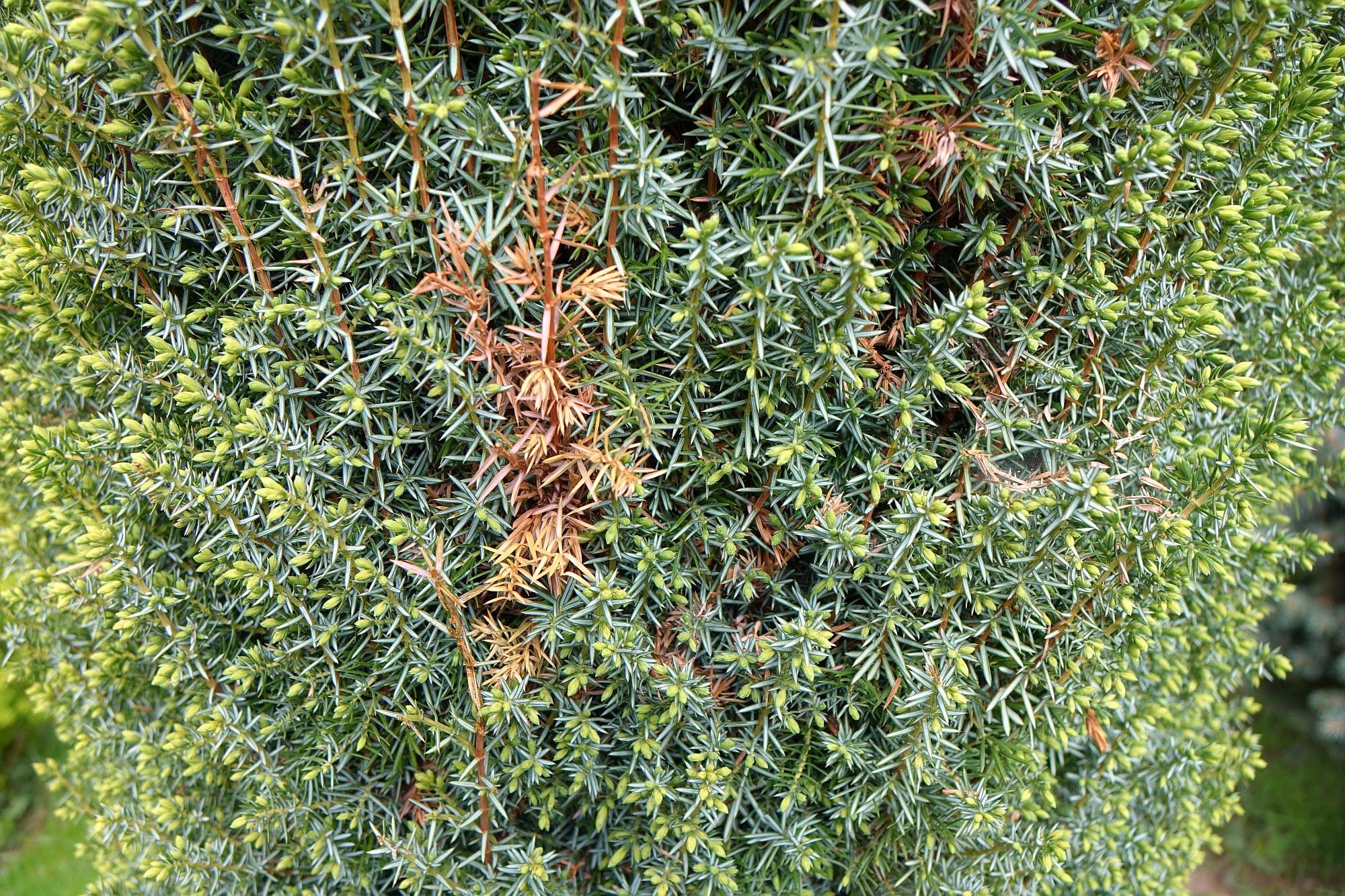
Twig blights
Phomopsis juniperovora
What is Juniper twig blight (Diaporthe juniperivora)?
Juniper twig blight is a highly destructive fungal disease caused by Diaporthe juniperivora (formerly Phomopsis juniperovora) mainly affecting juniper plants in western Oregon and eastern Washington. These diseases primarily target twigs and branches causing foliar blight and tip dieback, resulting in red or brown foliage that eventually turns ash-gray. Small lesions develop around the branch tips, leading to the death of the foliage.
How does Juniper twig blight (Diaporthe juniperivora) occur?
Juniper twig blight is caused by fungal spores that can spread and infect juniper plants. The spores are produced by the fungi Diaporthe juniperivora. The disease occurs when the spores land on young juniper foliage during periods of high moisture and humidity, usually in the spring. The spores enter the plant through wounds, insect feeding, or mechanical damage. Once inside the plant, the fungi grow and cause damage to the current year's growth, resulting in tip dieback and foliar blight.
Symptoms
1 - Effects on Plants
The disease targets twigs and branches, leading to the death of infected shoots. Severe infections can result in the loss of significant portions of the plant.
2 - Impact on Ecosystems and horticultural industries
• The disease poses economic implications for horticultural industries reliant on juniper plants for landscaping and ornamental purposes.
Solutions
1 - Cultural Practices
Prune out and burn affected twigs and branches to remove infected plant material. • Avoid wounding the twigs, as wounds provide entry points for the fungus. • Avoid overhead irrigation or ensure that plants are not wet for extended periods, as moisture promotes fungal growth. • Practice proper spacing between plants to allow for good air circulation, reducing humidity and minimizing disease spread. • Choose and grow resistant cultivars when possible. • Select cuttings only from disease-free stock plants. • Follow good cultural practices, including balanced fertilization and proper plant care, to maintain plant health and resilience. • Monitor plants regularly for early signs of infection and take prompt action if symptoms are observed.
2 - Fungicides Application
For treating Juniper twig blight, some commonly used fungicides include Cleary's 3336 EG (Group 1), CuPRO 5000 (Group M1), Heritage (Group 11), Kocide 3000 (Group M1), Mancozeb-based products (Group M3), Fore 80 WP, Protect DF, Mural (Group 7 + 11), Phyton 27 (Group M1), and Propiconazole-based products (Group 3). • Follow label instructions for proper application rates and timings. It's also recommended to consult with local agricultural extension services or professionals for guidance specific to your region and situation.
